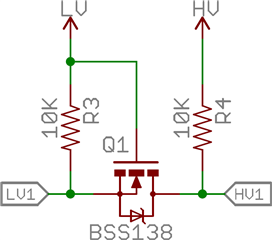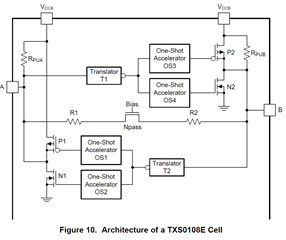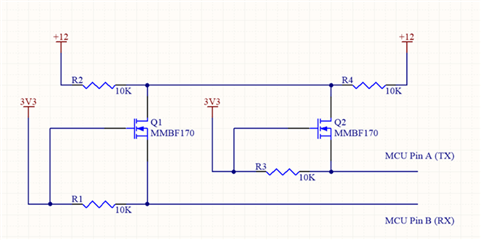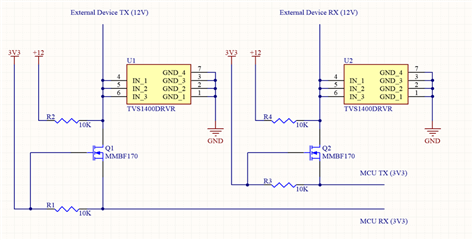Hi - I am using the TXS0108IE in my design to handle 1V8/3V3 voltage translation and it is working very well. I now have a need to incorporate 2 channels that need to be bidirectional 12V/3V3 but I have not as of yet found an IC for that. My MCU is 3V3, the devices on the far end are 12V and the channels operate, in most instances, as a low baud rate serial line with TX & RX. There are some devices however that treat the channels as DATA (bi-directional) and CLK.
After searching for several days I'm not reaching out in hopes you can point me to a suitable IC solution.
thx - sean





